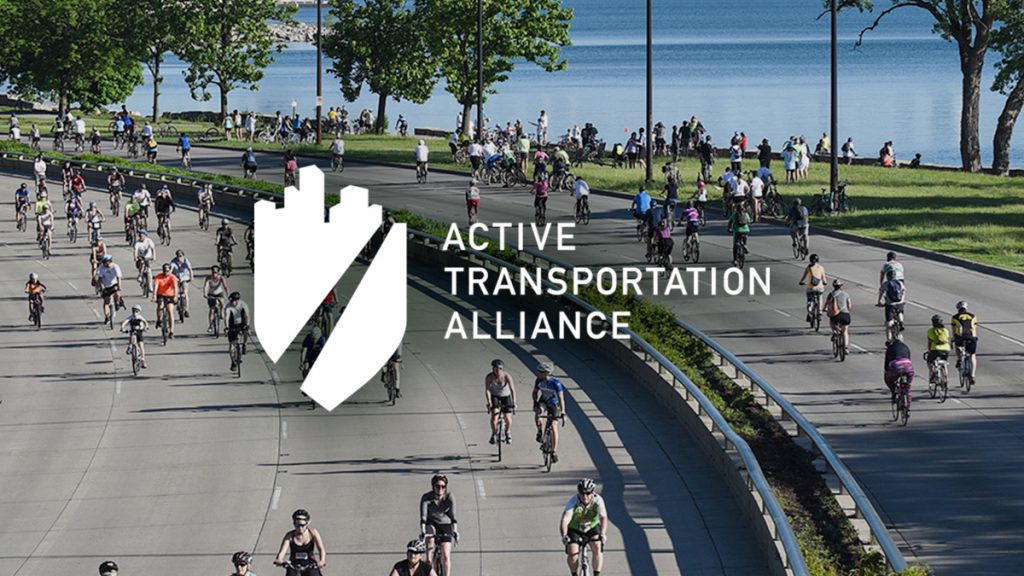What does Active Trans make of the new regional GO TO 2040 long-range plan from the Chicago Metropolitan Agency for Planning (CMAP)? We like that the plan argues for a region less dependent on cars. For example, it says “Sustainable prosperity depends on our region’s success in reducing congestion by promoting transportation options other than driving…..other modes—like walking, bicycling, and transit—need to make up a greater share of trips in the future.” Hallelujah!
The plan also includes some forward-thinking recommendations for how to boost funding for walking, biking and transit like modestly raising the gas tax. More and more, politicians and other government officials in the Chicago area understand how important non-auto modes of transportation are to the region’s economy and that these modes are chronically underfunded. Many also understand that the money saved by investing in projects that reduce vehicle miles traveled and gasoline consumption can easily offset the costs from a gas tax increase.
We also like that the plan recommends major transit expansion projects such as the CTA Red Line extension south and improvements to Metra lines among the 18 major “priority” capitol transportation projects that CMAP thinks can be funded through 2040. Additional transit projects are a longer list of recommended projects that may lack funding. Individual bike and pedestrian projects were excluded, not for lack of support, but because they aren’t expansive—and expensive—enough to be a major project under the criteria used. The same is true for smaller-scale road and transit projects.
The plan does recommend major new highway expansion projects that conflict with the goal of less auto use, but not as many new roads as in previous long-range plans. Also, the plan states a clear preference for road maintenance vs. expansion.
But it’s really up to us to determine how this plan is implemented. CMAP’s plans, like GO TO 2040, are not binding. Land use decisions, for example, are still made at the local level, and transportation decisions are made at all levels of government. We must continue to make the case from city hall to Springfield and the nation’s capitol for projects and policies that create a more sustainable region that is less-dependent on cars.
What is CMAP?
If you’re a glutton for punishment, read on! CMAP is essentially the region’s planning agency, and is run by a board comprised of government officials and private sector individuals. Transportation decisions (funding, construction, maintenance, etc) are largely made at the local, state and federal levels. Regional transportation plans and funding decisions (yes, another level of decision-making!) are made by the federally-designated Metropolitan Planning Organization (MPO), which is run by a committee appointed by state and local governments. The Chicago region’s MPO relies on CMAP to develop the plans that it approves, which then guides how the MPO spends its pot of transportation dollars (which mostly come from the feds)! Whew, did you follow that?
Ron Burke, executive director
Active Transportation Alliance

